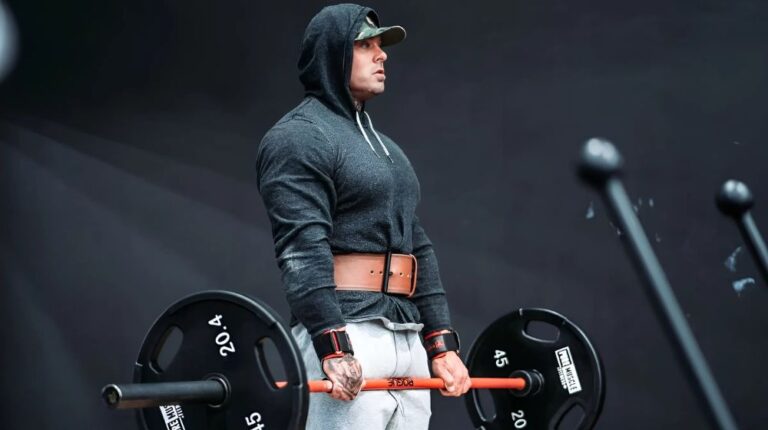Deadlifts are the king of all exercises, engaging multiple muscle groups and building total-body strength.
Introduction
Deadlifts have earned their reputation as the “king of all exercises” for good reason. This powerhouse movement engages nearly every major muscle group, making it one of the most effective exercises for building strength, power, and endurance. Whether you’re an athlete, a bodybuilder, or just someone looking to improve your overall fitness, deadlifts offer unparalleled benefits that extend beyond the gym. From developing a strong posterior chain (think hamstrings, glutes, and lower back) to enhancing grip strength and core stability, deadlifts are the ultimate functional exercise. They mimic real-life movements, such as lifting heavy objects, and improve athletic performance by building explosive strength and resilience.
What is Deadlifting?
Deadlifting is a compound strength exercise that involves lifting a weighted barbell (or other implement) from the ground to a standing position. It’s one of the fundamental lifts in strength training and powerlifting, alongside squats and bench presses.
The name “deadlift” comes from the act of lifting a “dead” weight (one that is stationary and without momentum) off the ground. The exercise primarily targets the posterior chain, which includes the hamstrings, glutes, lower back, and spinal erectors, but it also engages the core, upper back, and grip muscles, making it a full-body movement.
How to Perform a Deadlift: Step-by-Step Guide {1}
Proper form is essential for performing a deadlift safely and effectively. Here’s a step-by-step breakdown.
Set Up the Barbell: Preparing for a Deadlift
Choose the Right Equipment
- Use a standard barbell with weight plates that allow the bar to sit at the proper height. The bar should be about 8-9 inches off the ground when loaded with standard plates.
- If you’re a beginner or using smaller plates, consider using a platform or blocks to elevate the bar to the correct height.
Position the Barbell
- Place the barbell on a flat, stable surface, such as a lifting platform or gym floor.
- Stand with the barbell directly over the middle of your feet. The bar should be close enough that your shins are about 1-2 inches away without touching.
Set Your Feet
- Position your feet shoulder-width apart or slightly narrower, depending on comfort and mobility.
- Keep your toes pointing straight ahead or slightly outward at a natural angle (about 10-15 degrees).
Secure the Weights
- Ensure the weight plates are evenly loaded on both sides of the barbell.
- Use collars or clips to lock the plates in place to prevent them from shifting during the lift.
Clear Your Space
- Make sure the area around you is free of obstacles to avoid tripping or distractions.
Position Your Feet and Grip the Bar
Position Your Feet
- Feet Placement: Stand with your feet shoulder-width apart, ensuring they are directly under your hips.
- Bar Position: The barbell should be positioned over the middle of your feet, about 1-2 inches away from your shins.
- Toe Angle: Keep your toes pointing straight ahead or slightly outward (around 10-15 degrees) to allow for natural knee tracking.
Grip the Bar
- Bend at Hips and Knees: Lower yourself to the bar by pushing your hips back and bending your knees, keeping your back flat and chest up.
- Grip Width: Grasp the bar just outside your knees. Your hands should be positioned slightly wider than shoulder-width apart.
- Grip Style: Choose a grip style based on your preference and the weight being lifted:
- Overhand Grip: Both palms facing you; great for moderate weights.
- Mixed Grip: One palm facing you, the other facing away; ideal for heavier loads to improve grip stability.
- Hook Grip: Thumb wrapped under the fingers; often used by advanced lifters for maximum security.
Align Your Body
- Keep your shoulders slightly in front of the bar.
- Maintain a straight line from your hips to your head, avoiding any rounding of your back.
- Engage your core and pull your shoulder blades slightly together to stabilize your upper body.
Prepare Your Body
Engage Your Core
- Core Stability: Engage your abdominal muscles to create a strong, rigid core. This helps maintain a neutral spine and prevents any unwanted movement during the lift.
- Breathing: Take a deep breath into your belly to brace your core, holding it throughout the lift to maintain stability.
Maintain a Neutral Spine
- Back Position: Keep your spine neutral—neither rounded nor excessively arched. Imagine a straight line running from the top of your head to your tailbone.
- Shoulder Placement: Keep your shoulders pulled back and slightly down, avoiding a rounded or hunched posture.
Set Your Shoulders and Grip
- Shoulders: Position your shoulders just slightly in front of the bar.
- Grip: Ensure your grip is firm and even, with the bar resting comfortably in your hands.
Focus on Movement
- Eyes: Look straight ahead or slightly downward to maintain a neutral neck position.
- Control: Perform the lift with deliberate, controlled movements. Avoid jerking the bar off the ground or using momentum.
Lift the Bar
Initiate the Lift
- Drive Through Your Heels: Start the lift by pushing through your heels and engaging your glutes and hamstrings.
- Extend Hips and Knees: Simultaneously extend your hips and knees while keeping the bar close to your body.
- Engage the Back: Keep your back flat and straight, avoiding any rounding of the spine.
Maintain Control
- Bar Position: The barbell should move vertically in a straight line close to your body. Avoid moving it away from your shins.
- Shoulder and Hip Alignment: Ensure that your hips and shoulders rise at the same rate to maintain a balanced lift.
Lockout at the Top
- Final Position: Stand tall with your hips fully extended and your chest up.
- Shoulders Back: Pull your shoulders slightly back, keeping your upper body engaged but not over-arched.
Focus on Breathing
- Breath Control: Breathe out at the top of the lift and ensure a controlled descent when lowering the bar.
Lock Out at the Top
Stand Tall
- Hips and Shoulders: At the top of the lift, your hips should be fully extended, and your shoulders pulled back slightly. Avoid leaning backward or arching excessively.
- Chest Up: Keep your chest lifted and your head aligned with your spine to maintain a neutral posture.
Breathing
- Exhale: As you reach the top position, exhale slowly and fully, ensuring your core remains engaged for stability.
Control the Lift
- Hold the Position: Briefly pause at the top to ensure complete lockout before lowering the bar.
- Avoid Overextension: Do not overextend your lower back or shrug your shoulders at the top of the lift.
Lowering the Bar
- Maintain Form: Slowly and in control, lower the bar by bending your hips first, then your knees, ensuring the bar remains close to your body throughout the descent.
Lower the Bar
Control the Descent
- Hinge at Hips: Begin lowering the bar by hinging at your hips, keeping your back flat and core engaged.
- Maintain Proximity: The barbell should stay close to your body as you lower it to avoid shifting away from your shins.
Bend Knees
- Knee Flexion: Gradually bend your knees while continuing to hinge at the hips until the bar reaches the floor.
Avoid Dropping the Bar
- Controlled Descent: Avoid dropping the bar quickly. Lower it in a slow, controlled manner to prevent injury and maintain form.
Keep Your Back Neutral
- Spine Position: Throughout the lowering phase, keep your spine neutral to avoid any rounding or excessive arching.
Deadlifting Engages Multiple Muscle Groups

Deadlifting is one of the most effective compound exercises because it targets and engages a wide variety of muscle groups simultaneously. This makes it a highly efficient and comprehensive full-body workout. Below are the key muscle groups involved during a deadlift:
Posterior Chain
Hamstrings
The hamstrings are heavily activated as you extend your hips to lift the barbell.
Glutes
The glutes play a critical role in hip extension, helping drive the movement upward.
Lower Back
The spinal erectors support the lower back, keeping the spine stable during the lift.
Core
The abdominals, obliques, and lower back muscles are engaged throughout the lift to maintain a neutral spine and stabilize the body. A strong core is essential for proper form and to prevent injury.
Upper Back and Lats
Upper Back Muscles
The traps, rhomboids, and lats are activated to pull the barbell upward and stabilize the upper body.
Grip and Forearms
The forearms and grip muscles are engaged to maintain a firm hold on the barbell, requiring strength in the hands and wrists.
Quadriceps
While not as heavily emphasized as the posterior chain, the quadriceps play a role in knee extension during the lift, especially in the lockout phase.
This combination of muscle engagement makes deadlifting a highly functional exercise, improving not only strength and power but also balance, coordination, and stability across multiple areas of the body.
Improves Functional Strength
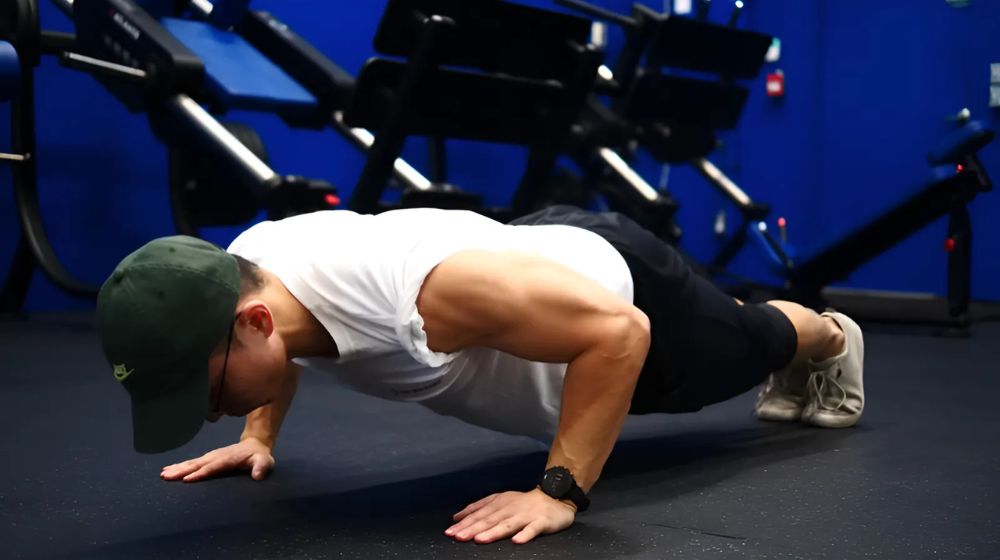
Deadlifting is one of the best exercises for improving functional strength, which refers to the ability of your muscles and joints to perform everyday tasks efficiently and safely. Unlike isolated movements, deadlifts engage multiple muscle groups in a way that mimics real-life activities, making it highly beneficial for practical strength development. Below are the key ways deadlifting enhances functional strength:
Full-Body Engagement
Posterior Chain
Deadlifting primarily targets the posterior chain—hamstrings, glutes, and lower back. These muscles work together to support activities such as lifting heavy objects, picking up bags, or moving furniture.
Core Stability
A strong core is essential for maintaining proper posture and stability during functional movements. Deadlifting strengthens the abdominals, obliques, and lower back, improving your ability to perform tasks that require core support, like lifting or carrying objects.
Improves Grip Strength
Deadlifting requires a firm grip to hold onto the barbell, which translates to better overall grip strength for activities such as climbing, carrying weights, or even performing bodyweight exercises.
Enhances Power and Balance
The movement demands coordination between upper and lower body muscles, promoting balanced strength and better movement efficiency in functional activities.
Reduces Risk of Injury
Functional strength training like deadlifting helps to prevent injuries by reinforcing proper biomechanics and ensuring muscles work harmoniously during movements.
Incorporating deadlifts into your training routine strengthens your body for real-world tasks, improving your overall ability to perform daily activities with ease and safety.
Boosts Hormonal Response

Deadlifting is not only a powerful strength-building exercise but also a key factor in promoting a strong hormonal response. The multi-joint, compound nature of the deadlift triggers hormonal changes that support muscle growth, fat loss, and overall performance. Below’s how deadlifting boosts hormonal response:
Increased Testosterone and Growth Hormone
Deadlifting is one of the most effective exercises for stimulating the release of testosterone and growth hormone. These hormones play a crucial role in muscle repair, growth, and fat metabolism. The heavy lifting involved in deadlifts signals the body to produce more of these anabolic hormones, leading to enhanced physical development.
Cortisol Regulation
While deadlifting increases testosterone and growth hormone, it can also help regulate cortisol, the stress hormone. When performed correctly, deadlifts improve physical resilience to stress and reduce the overproduction of cortisol, which can lead to muscle breakdown and fat gain when chronically elevated.
Enhanced Insulin Sensitivity
Deadlifting improves insulin sensitivity by promoting efficient glucose uptake into muscles, aiding in better recovery and reducing the risk of insulin resistance. This not only helps with muscle growth but also supports fat loss and overall metabolic health.
Supports Muscle Growth and Repair
The intense loading of the posterior chain during deadlifting signals the body to adapt by increasing muscle fiber size and strength. This hormonal response ensures that the muscles are primed for recovery and growth, making deadlifting an essential component of a well-rounded strength training regimen.
Overall Performance Improvement
The hormonal boost from deadlifting translates to increased performance in other areas of fitness, such as endurance, power, and athletic performance. The hormonal response enhances not only physical strength but also mental focus and endurance, helping athletes and lifters push their limits.
Deadlifting goes beyond just building raw strength—it fosters a hormonal environment that supports muscle development, recovery, and optimal performance.
Enhances Posture and Stability
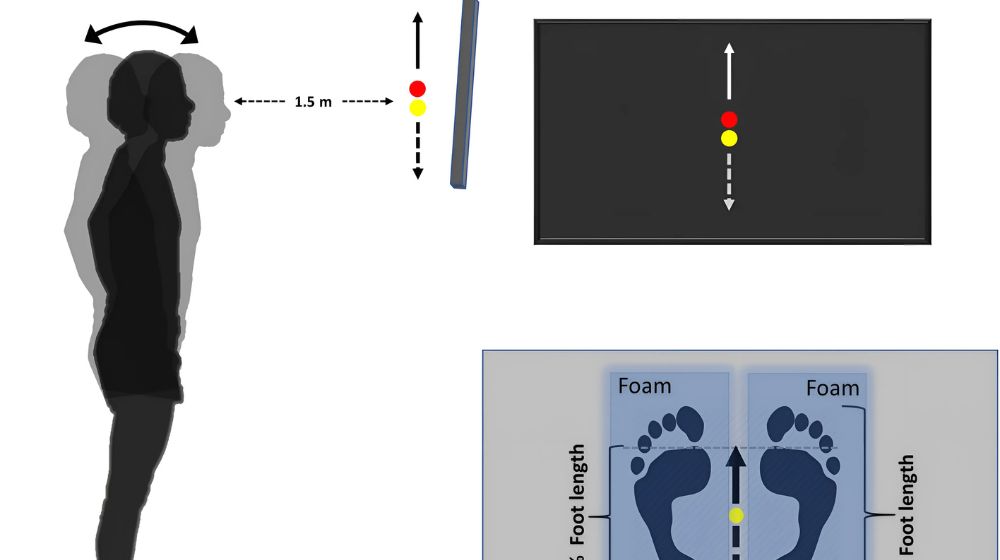
Deadlifting is not only a strength-building exercise but also a key movement that improves posture and enhances overall stability. Proper form and consistent practice of deadlifts contribute to better alignment, balance, and overall functional movement. Below are the ways in which deadlifting enhances posture and stability:
Strengthens the Core and Spinal Erectors
Deadlifting engages the core and lower back extensively, strengthening the muscles that support spinal stability. A strong core helps maintain a neutral spine position, which is essential for good posture. This improves overall body alignment, reducing the risk of poor posture-related issues like lower back pain and misalignment.
Improves Hip and Shoulder Mobility
Proper deadlift technique emphasizes a balanced hip and shoulder position, ensuring that both sides of the body move symmetrically. This improves joint mobility and reduces muscular imbalances, which often contribute to poor posture and instability.
Enhances Balance and Control
The heavy load and controlled nature of deadlifting require balance and coordination between multiple muscle groups. This promotes better proprioception (body awareness) and helps improve stability, particularly in the lower body and core, during other functional movements.
Corrects Muscular Imbalances
Deadlifting targets various muscle groups—hamstrings, glutes, lower back, and upper back—leading to balanced development. Addressing these imbalances is crucial for maintaining proper posture, as overactive or weaker muscles can cause alignment issues.
Reduces Risk of Injury
Improved posture and stability through deadlifting reduce the risk of injuries related to poor body mechanics. Whether lifting heavy objects or engaging in other physical activities, a stable and balanced body is less prone to strain and overuse injuries.
Enhances Functional Movements
Better posture and stability from deadlifting extend beyond the gym, allowing for improved performance in everyday tasks such as bending, lifting, and carrying. Strong, stable movement patterns lead to safer, more efficient physical activities.
Deadlifting not only builds strength but fosters a solid foundation for better posture and enhanced stability, ensuring long-term health and performance.
Burns More Calories

Deadlifting is a highly effective exercise for burning calories, promoting fat loss, and boosting overall metabolic rate. The intensity of the movement, combined with its ability to engage multiple muscle groups, makes it an efficient way to torch calories during and after your workout. Below are the ways deadlifting helps in burning more calories:
High-Calorie Burn During Exercise
Deadlifting is a compound movement that requires significant effort from multiple muscle groups. As a result, it increases the overall energy expenditure during the workout. Lifting heavy weights forces your body to use more calories to fuel the muscles, making deadlifts an efficient tool for burning calories while building strength.
Builds Muscle, Boosting Resting Metabolic Rate
The heavy loads involved in deadlifting stimulate muscle hypertrophy, or growth, which contributes to an increased resting metabolic rate (RMR). More muscle mass means your body burns more calories even at rest, helping with long-term fat loss.
Elevates Post-Workout Caloric Expenditure
Deadlifting generates a phenomenon known as excess post-exercise oxygen consumption (EPOC). This means your body continues to burn calories even after you’ve finished lifting. EPOC allows you to burn more calories as your body works to recover and repair from the intense demands of the deadlift.
Improves Overall Functional Fitness
The functional nature of deadlifting, which mimics real-world activities such as lifting heavy objects, leads to a greater calorie burn. Activities that require strength, balance, and coordination tend to be more taxing on the body, leading to a higher calorie expenditure during workouts.
Supports Fat Loss Goals
Because deadlifting targets major muscle groups and engages the entire body, it helps in building muscle, improving strength, and boosting metabolism—all of which contribute to effective fat loss. By incorporating heavy deadlifts into your training regimen, you create a powerful calorie-burning effect both during and after your workout.
Whether your goal is to lose weight, improve fitness, or build strength, deadlifting offers a powerful, calorie-burning solution that delivers result.
Improves Grip Strength
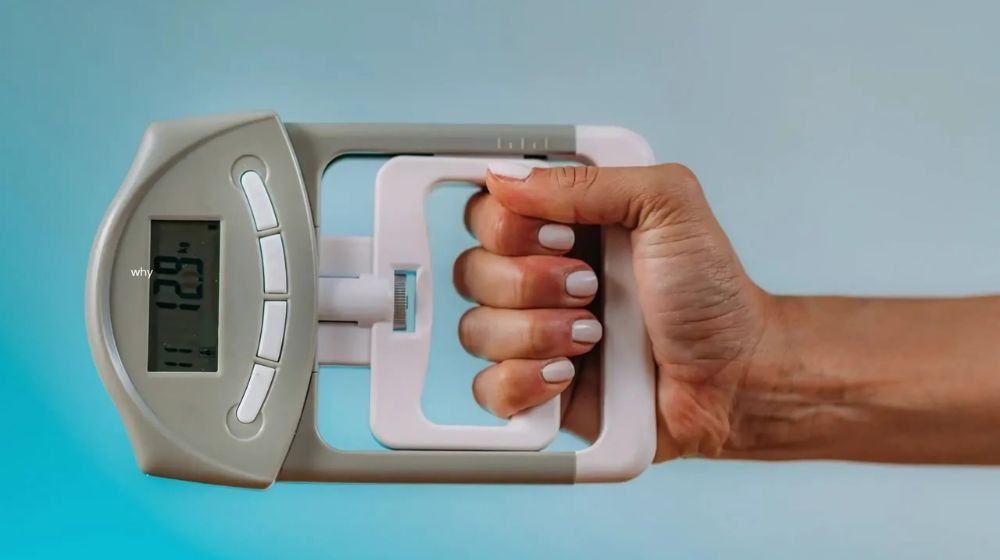
Deadlifting is one of the best exercises for improving grip strength. Grip strength is essential for a variety of physical activities, from lifting heavy objects to performing other compound movements. The combination of heavy weight, controlled movement, and constant tension helps develop and strengthen your grip. Here’s how deadlifting enhances grip strength:
Involves the Entire Hand and Forearm Muscles
Deadlifting requires you to firmly grasp the barbell, which engages the muscles in your hands, fingers, and forearms. These muscles are heavily activated throughout the lift, improving overall grip endurance and strength.
Enhances Forearm and Wrist Stability
The exercise not only strengthens the muscles used for holding the bar but also improves wrist and forearm stability. Stronger forearms and wrists translate into better control over heavy weights, reducing the risk of injury during other lifts or physical tasks.
Builds Functional Grip Strength
Deadlifting simulates real-world movements where grip strength is critical—like carrying heavy boxes, moving equipment, or lifting sports equipment. This functional grip strength enhances your ability to handle various daily tasks and athletic activities.
Reduces Grip Fatigue
The heavy load lifted during deadlifting pushes your grip to its limits, leading to significant increases in strength. Over time, consistent deadlifting improves your ability to hold onto heavier weights for longer periods, reducing fatigue and improving performance.
Improves Lifting Performance
A stronger grip directly impacts your overall lifting performance. Whether you’re performing other lifts like rows, pull-ups, or farmer’s carries, having a solid grip enables you to lift heavier weights and perform movements with greater control.
Builds Endurance for Competitive Lifts
In competitive lifting, a strong grip is crucial for achieving maximal lifts. Deadlifting helps build grip endurance, allowing you to lift heavier weights over longer periods, making it a staple in strength training programs for powerlifters and athletes alike.
Increases Bone Density

Deadlifting is a weight-bearing exercise that plays a significant role in increasing bone density, making it an essential part of a comprehensive strength training routine. As bones adapt to the stress placed on them, regular heavy lifting like deadlifting promotes stronger, denser bones, which is especially important as we age. Here’s how deadlifting helps increase bone density:
Weight-Bearing Nature of Deadlifting
Deadlifting involves lifting heavy weights off the ground, a movement that puts significant stress on the bones of the lower body, including the spine, hips, and legs. This stress stimulates bone remodeling, where old bone is replaced with new, denser bone tissue.
Strengthens the Spine and Lower Body
The posterior chain muscles, including the lower back, glutes, and hamstrings, are heavily involved in deadlifting. Strengthening these areas helps support the spine, which is vital for maintaining healthy bones and preventing conditions like osteoporosis or age-related bone loss.
Prevents Bone Loss Over Time
As we age, bone density naturally decreases, leading to an increased risk of fractures and fractures. By engaging in weight-bearing exercises like deadlifting, the body adapts by building stronger bones to handle the stress, reducing the risk of bone loss and fractures.
Enhances Mechanical Loading
Mechanical loading through deadlifts and other resistance exercises increases the amount of force exerted on the bones, which in turn promotes the production of bone-forming cells (osteoblasts). This process leads to increased bone mineral density (BMD), essential for maintaining skeletal health.
Supports Long-Term Health
Strong bones contribute to overall physical health, allowing individuals to maintain an active lifestyle well into older age. In addition to improving bone density, deadlifting enhances mobility and balance, reducing the risk of falls and fractures.
Complements Other Bone-Building Exercises
While deadlifting is a highly effective exercise for increasing bone density, it works best when combined with a balanced strength training program that includes other compound movements like squats, lunges, and overhead presses.
Enhances Athletic Performance
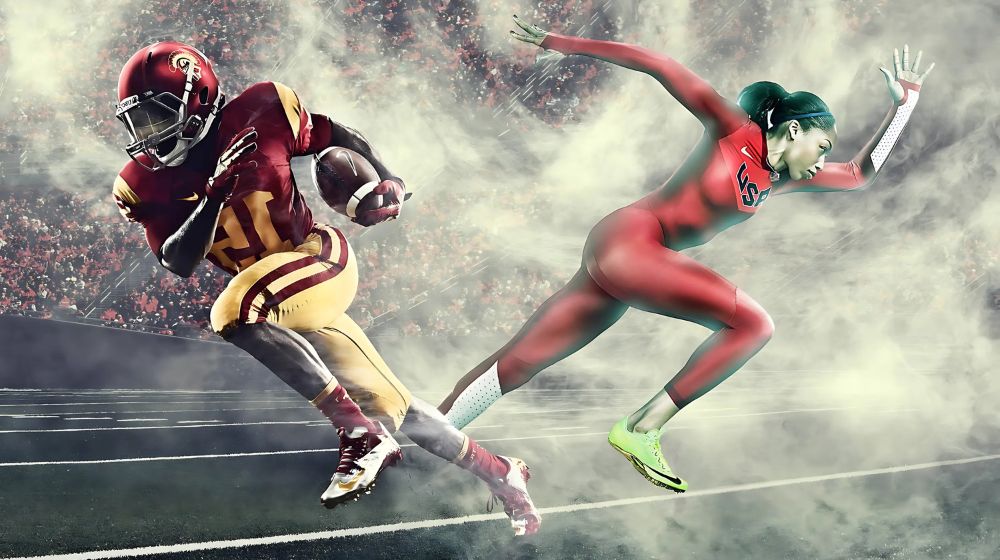
Deadlifting is a foundational exercise that plays a critical role in improving athletic performance. By targeting multiple muscle groups and enhancing strength, power, and functional movement, deadlifting translates directly to better performance across a variety of sports and physical activities. Here’s how deadlifting enhances athletic performance:
Improves Overall Strength
Deadlifting develops total-body strength, particularly in the posterior chain—hamstrings, glutes, and lower back. Stronger muscles allow athletes to generate more force, which is essential for explosive movements, such as sprinting, jumping, and pushing through resistance in sports like football, basketball, or track and field.
Boosts Power and Explosiveness
The lift engages fast-twitch muscle fibers, which are crucial for producing power and explosiveness. Athletes who need quick bursts of speed or force—like sprinters, powerlifters, or rugby players—benefit from deadlifting as it enhances their ability to accelerate or lift heavy loads rapidly.
Enhances Core Stability and Balance
Athletic movements require a stable core to maintain proper form and prevent injury. Deadlifting strengthens the core, which helps athletes maintain balance and control during dynamic movements, such as cutting, pivoting, or changing direction in sports like soccer or tennis.
Develops Functional Strength
Deadlifting mimics real-life tasks such as lifting objects off the ground, making it an essential exercise for functional athletic performance. Strong deadlift mechanics ensure that athletes can handle various physical demands with efficiency and safety.
Improves Endurance
While deadlifting focuses on short-term bursts of power, it also improves muscular endurance, particularly in the lower body and grip strength. Athletes engaged in prolonged or high-intensity activities benefit from this increased muscular endurance, enabling them to sustain effort throughout long games or events.
Reduces Risk of Injury
Deadlifting strengthens muscles and stabilizers, which reduces the likelihood of injuries by improving movement patterns. Athletes with a solid deadlift foundation are better equipped to handle the physical demands of their sports without risking strains or imbalances that can lead to injury.
Versatility for All Fitness Levels
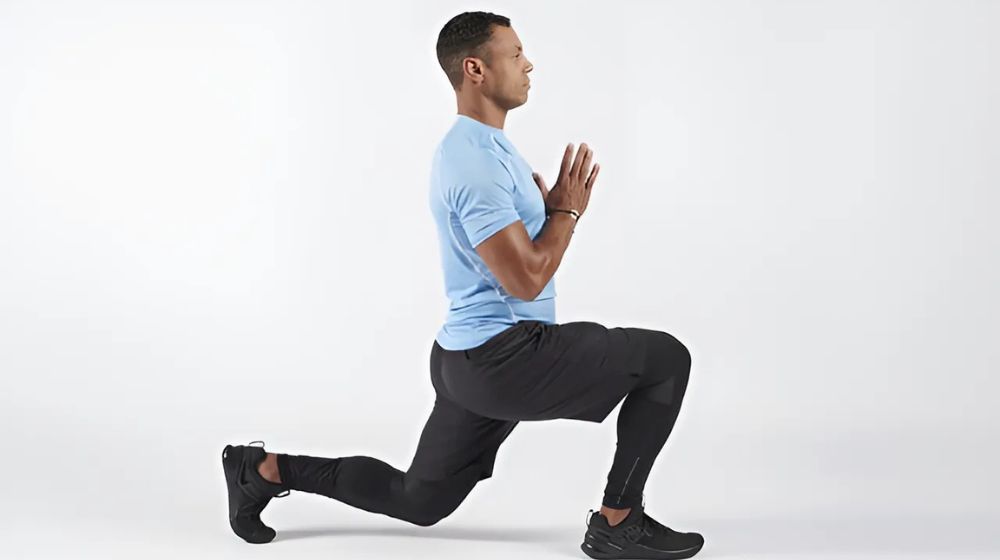
Deadlifting is a highly versatile exercise that can be adapted to suit individuals at any fitness level, from beginners to advanced lifters. Its scalability allows it to be modified in terms of weight, technique, and variations, making it accessible and effective for a wide range of individuals. Here’s how deadlifting caters to all fitness levels:
Beginner-Friendly Deadlift Variations
For those new to deadlifting, lighter weights and variations such as Romanian Deadlifts or Sumo Deadlifts can be used to build foundational strength and technique. These variations reduce strain on certain muscle groups while focusing on learning proper form.
Progression for Intermediate Lifters
Intermediate lifters can increase the intensity of their deadlift by incorporating heavier weights, controlled reps, and more complex variations like Deficit Deadlifts or Snatch Grip Deadlifts. This progression allows for greater strength gains and muscle activation.
Advanced Deadlift Techniques
Advanced lifters often explore variations like Trap Bar Deadlifts, Sumo Deadlifts, or Paused Deadlifts to push their limits further. These variations challenge the muscles in different ways and allow for constant progression in strength and performance.
Customizable for Individual Goals
Whether your goal is hypertrophy, strength, athletic performance, or injury prevention, deadlifting can be tailored to meet specific objectives. For example, lower-rep, heavier deadlifts focus on maximal strength, while higher-rep sets improve muscular endurance and hypertrophy.
Variations for Mobility and Rehabilitation
For individuals with mobility issues or recovering from injuries, deadlift variations like Romanian Deadlifts or Deficit Deadlifts help build strength without compromising safety. These modifications promote controlled movements and reduced stress on vulnerable areas.
Accessible Equipment and Progression
Deadlifts can be performed with a variety of equipment, including barbells, dumbbells, kettlebells, or even resistance bands. This adaptability allows individuals to progress at their own pace, using different types of equipment to vary intensity and maintain interest.
Builds Functional Strength for Everyone
No matter the fitness level, deadlifting provides a functional strength foundation that enhances overall movement patterns, making it a valuable exercise for everyday activities and athletic performance.
Builds Mental Resilience

Deadlifting is not only a physically demanding exercise but also a powerful tool for developing mental resilience. The challenge of lifting heavy weights, maintaining proper form, and pushing through fatigue builds mental strength that translates into various aspects of life. Here’s how deadlifting builds mental resilience:
Focus and Determination
Deadlifting requires intense concentration and focus on every rep. To complete the lift, you need to stay present, push through physical discomfort, and maintain mental clarity. This mental focus enhances your ability to perform under pressure, both in training and real-life situations.
Overcoming Physical and Mental Fatigue
The process of deadlifting pushes both your physical and mental limits. Whether it’s grinding through a heavy set or overcoming setbacks in progress, each challenge builds mental toughness. Over time, this resilience helps you manage physical and emotional stress more effectively.
Building Confidence
As you consistently improve your deadlift performance, confidence grows. Achieving new personal records and overcoming difficult lifts reinforces the belief that you are capable of handling challenges, both in and out of the gym.
Handling Failure and Perseverance
Deadlifting often involves failure at certain weights or technique adjustments. Instead of being discouraged by setbacks, you learn to adapt, refine your approach, and persist. This fosters a mindset of perseverance, essential for success in any area of life.
Developing Grit
The heavy lifting and repetitive nature of deadlifting build grit—an unwavering determination to keep pushing forward despite difficulties. This mental quality is crucial for long-term success, whether in sports, work, or personal goals.
Stress Management
Deadlifting serves as a stress-relief outlet. The controlled environment of lifting, combined with the physical exertion, helps manage stress and improve overall mental health, promoting resilience in handling everyday challenges.
Resilience in Overcoming Challenges
Deadlifting trains you to handle adversity, setbacks, and unexpected obstacles. By consistently pushing through physical and mental barriers, you become better equipped to manage life’s complexities, developing the mental strength needed to succeed.
How to Perform Deadlifts Safely
Deadlifting is a highly effective exercise for building strength, but performing it with proper technique is essential to avoid injury. Here’s a step-by-step guide on how to perform deadlifts safely:
Proper Warm-Up
Before starting any deadlift, it’s crucial to warm up your muscles and joints to improve mobility and reduce the risk of injury. A proper warm-up includes dynamic stretches for the lower body, mobility drills for the hips, and activation exercises for the posterior chain.
Choosing the Right Weight
Start with a weight that allows you to maintain good form throughout the lift. Using excessive weight too early can compromise technique and increase the risk of injury. Gradually increase the load as your strength improves.
Maintaining a Neutral Spine
A neutral spine is key to preventing lower back injuries. Keep your back flat, with the natural curve maintained throughout the movement. Avoid rounding the lower back, as this puts excess strain on the lumbar region.
Grip and Setup
- Grip: Choose either a conventional grip (overhand), mixed grip (one overhand, one underhand), or hook grip (thumb wraps around bar with fingers).
- Setup: Stand with your feet hip-width apart, keeping the bar close to your shins with the weight directly over midfoot.
Positioning the Bar and Hands
- Lower the barbell to mid-shin height.
- Place your hands shoulder-width apart with a secure grip on the bar.
- Ensure the barbell is directly above the midfoot, not too far forward or backward.
Lifting with Your Legs First
Begin the lift by driving through your heels and pushing your hips forward. Keep the bar close to your body as you lift. The movement should be initiated by engaging your glutes and legs, not by relying solely on your lower back.
Controlling the Descent
Lower the bar slowly and with control, maintaining a neutral spine position. Avoid allowing the barbell to crash to the ground, as this can lead to injury. Focus on form, keeping your back flat and core engaged throughout the descent.
Proper Breathing
Take a deep breath before lifting to create intra-abdominal pressure. Hold your breath as you lift and exhale on the way down. Proper breathing helps stabilize your core and supports safer lifting.
Avoiding Overloading
Never attempt to lift more weight than you can handle with proper form. Overloading increases the risk of injury, especially to the lower back and joints. Focus on progressive overload—gradually increasing weight over time.
Rest and Recovery
Ensure you allow adequate recovery between sets and sessions. Proper recovery prevents overuse injuries and allows your body to adapt to the demands of the exercise.
Here’s a simple deadlift technique chart to guide safe and effective performance:
| Step | Technique | Tips |
|---|---|---|
| 1. Warm-Up | Perform a proper warm-up, including dynamic stretches for the lower body and posterior chain. | Prevents injury and prepares muscles and joints for heavier lifts. |
| 2. Setup | Stand with feet hip-width apart, bar close to shins, and grip the bar at shoulder-width. | Ensure the bar is directly above the midfoot. |
| 3. Neutral Spine | Maintain a flat back throughout the lift, with the natural curve in your lower back. | Avoid rounding or overextending the lower back. |
| 4. Grip | Choose conventional, mixed, or hook grip. Ensure a secure grip to prevent slipping. | Focus on a firm grip that reduces strain on the wrists. |
| 5. Lift | Initiate the lift by pushing through the heels and engaging your glutes. Keep the bar close to the body. | Avoid relying solely on the lower back. |
| 6. Control Descent | Lower the bar slowly and with control, maintaining a neutral spine throughout the movement. | Focus on smooth, controlled movements to avoid injury. |
| 7. Breathing | Take a deep breath, brace your core, and hold your breath as you lift. Exhale as you return the bar to the ground. | Stabilizes the core and helps maintain proper form. |
| 8. Avoid Overloading | Use a weight that allows you to maintain good form. Avoid heavy weights that compromise technique. | Prioritize technique over weight to prevent injury. |
| 9. Recovery | Allow adequate rest between sets and recovery time between sessions. | Prevents overuse injuries and supports muscle repair. |
Diet Chart for Deadlifting Exercise
To optimize your performance and recovery for deadlifting, a well-balanced diet that supports strength training is essential. Here’s a sample diet plan tailored for deadlifting, focusing on macronutrients (protein, carbohydrates, and fats) along with key micronutrients.
Here’s a diet chart for deadlifting exercise in a table format:
| Meal | Food | Macros | Calories |
|---|---|---|---|
| Meal 1: Breakfast | Oatmeal, Eggs, Nut Butter, Berries | Protein: 35g, Carbs: 40g, Fats: 10g | 400 kcal |
| Meal 2: Pre-Workout | Greek Yogurt, Honey, Walnuts | Protein: 20g, Carbs: 30g, Fats: 5g | 300 kcal |
| Meal 3: Post-Workout | Grilled Chicken, Quinoa, Vegetables | Protein: 50g, Carbs: 40g, Fats: 10g | 450 kcal |
| Meal 4: Dinner | Salmon, Sweet Potatoes, Asparagus | Protein: 45g, Carbs: 30g, Fats: 8g | 400 kcal |
| Snack 1 | Boiled Egg, Apple | Protein: 12g, Carbs: 30g | 150 kcal |
| Snack 2 | Whey Protein, Almond Butter | Protein: 30g, Carbs: 10g, Fats: 10g | 250 kcal |
Common Deadlift Variations
Conventional Deadlift
The conventional deadlift is the most common and traditional form of deadlifting. It involves lifting a barbell off the ground with a straight back, feet shoulder-width apart, and hands positioned slightly outside the knees. This variation engages multiple muscle groups in a balanced manner, focusing on the posterior chain—primarily the hamstrings, glutes, lower back, and traps.
Key Features
- Foot Position: Shoulder-width apart.
- Grip: Hands slightly outside the knees.
- Range of Motion: Starts with the barbell on the floor and finishes with a fully locked-out position at the top.
- Focus: Strengthens the posterior chain (hamstrings, glutes, lower back) and core stability.
Benefits
- Strength Development: Builds total-body strength with a focus on the posterior chain.
- Improves Core Stability: Engages the core for stability throughout the lift.
- Versatility: Suitable for both novice and advanced lifters, offering the foundational strength required for other lifts.
Sumo Deadlift
The sumo deadlift is a variation of the conventional deadlift that involves a wider stance and a more upright posture. In this lift, the feet are positioned much wider apart, and the hands grip the bar inside the knees. This changes the biomechanics of the lift, emphasizing different muscles and reducing strain on the lower back.
Key Features
- Foot Position: Wide stance, feet positioned well outside shoulder-width.
- Grip: Hands inside the knees.
- Range of Motion: Starts with the barbell on the floor and finishes with a fully locked-out position at the top.
- Focus: Targets the inner thighs, glutes, and adductors while engaging the posterior chain.
Benefits
- Reduced Lower Back Strain: The more upright posture decreases stress on the lower back while allowing more focus on the legs and hips.
- Increased Hip and Leg Engagement: Strengthens the muscles responsible for explosive power from the floor.
- Improved Flexibility: Enhances hip mobility due to the wider stance and upright position.
Romanian Deadlift
The Romanian deadlift (RDL) is a variation of the deadlift that primarily focuses on the hamstrings, glutes, and lower back. Unlike the conventional deadlift, the barbell only descends to just below the knees, reducing the range of motion and placing greater emphasis on hamstring and glute strength.
Key Features
- Foot Position: Shoulder-width apart.
- Grip: Standard deadlift grip, slightly outside the knees.
- Range of Motion: The bar only descends to just below the knees before returning to the starting position.
- Focus: Emphasizes hamstring flexibility, strength, and core stability.
Benefits
- Improved Hamstring and Glute Strength: Reduces the range of motion, making it easier to focus on these key muscles.
- Enhanced Mobility: Increases flexibility and control in the posterior chain.
- Reduced Risk of Lower Back Injury: Minimizes the stress on the lower back compared to the conventional deadlift.
Trap Bar Deadlift
The trap bar deadlift is performed using a hexagonal or “trap” bar, which allows the lifter to adopt a more upright posture compared to a conventional deadlift. This variation reduces the strain on the lower back and emphasizes the engagement of the legs and glutes.
Key Features
- Foot Position: Similar to a conventional deadlift, but the feet are positioned inside the bar.
- Grip: Neutral grip, with hands placed directly on the sides of the bar.
- Range of Motion: Starts with the barbell resting on the ground and finishes with the hips and shoulders fully extended.
- Focus: More balanced, engaging the legs, glutes, and upper back while reducing lower back stress.
Benefits
- Reduced Lower Back Strain: The more upright posture decreases stress on the lower back while still engaging key muscles.
- Increased Leg and Hip Engagement: Allows lifters to focus more on the legs and glutes.
- Improved Grip: The neutral grip may reduce hand fatigue, making it easier to handle heavier loads.
Conclusion
The deadlift, across its various variations, stands as the undisputed king of exercises. Its ability to engage multiple muscle groups—ranging from the posterior chain to core stability and grip strength—makes it a cornerstone for overall strength and functional fitness.
Whether you’re training for strength, athletic performance, or rehabilitation, the deadlift offers unmatched versatility and benefits. From the traditional conventional deadlift to variations like the sumo, Romanian, trap bar, and others, each form provides unique advantages tailored to specific training goals.
FAQs about Deadlifting
What is the primary muscle group worked in a deadlift?
The deadlift primarily targets the posterior chain, including the hamstrings, glutes, and lower back.
Is deadlifting safe for beginners?
Yes, but proper technique and form are crucial. Beginners should start with lighter weights and focus on mastering their form.
How often should I deadlift per week?
1-2 times per week is typically sufficient, depending on your overall training volume and goals.
What are the common deadlift variations?
Sumo deadlift, Romanian deadlift, trap bar deadlift, rack pull, and Jefferson deadlift.
How do I prevent lower back strain during deadlifting?
Maintain a neutral spine, engage your core, and ensure the bar stays close to your body.
Can deadlifting help with fat loss?
Yes, deadlifting promotes muscle growth and boosts overall calorie burn, supporting fat loss.
What grip should I use for deadlifting?
A double-overhand grip or mixed grip is commonly used. Beginners should avoid the mixed grip until they develop sufficient grip strength.
How do I increase my deadlift max?
Focus on accessory lifts like Romanian deadlifts and accessory work, along with proper programming and recovery.
Should I use straps for deadlifting?
Straps can be used to improve grip strength, but focus should remain on developing grip strength for long-term progression.
What is the difference between conventional and sumo deadlift?
Conventional deadlifts have a narrower stance, targeting the posterior chain, while sumo deadlifts use a wider stance, emphasizing the legs and glutes.
What should my macronutrient breakdown be for deadlifting?
Generally, aim for 1.2-2.0 grams of protein per kg of body weight, 3-5 grams of carbs per kg, and 0.8-1.2 grams of fats per kg.
How many calories should I consume to support deadlifting?
Caloric needs vary depending on goals, but typically aim for a caloric surplus to support strength gains (10-20% above maintenance).
Should I eat before or after deadlifting?
Eating a balanced meal with protein and carbs 1-2 hours before training can optimize performance, while post-workout nutrition aids recovery.
Which foods are best for pre-workout meals?
Oatmeal, eggs, lean meats, fruits, and nuts are good choices for pre-workout meals.
Are supplements necessary for deadlifting?
Supplements like whey protein, creatine, and BCAAs can support recovery and performance, but a balanced diet should be prioritized first.
What foods should I avoid before deadlifting?
High-fat or greasy foods and heavy meals that cause bloating should be avoided to ensure optimal performance.
Can intermittent fasting impact deadlift performance?
Intermittent fasting may work well if balanced with proper nutrient intake and recovery, but individual needs vary.
How can a diet support recovery after deadlifting?
A diet rich in protein, healthy fats, and complex carbohydrates helps repair muscle tissue and replenish glycogen stores.
Is carb loading beneficial for deadlifting?
Carb loading can help fuel workouts by increasing glycogen stores, which may benefit high-intensity lifts like deadlifts.
How do I manage a calorie deficit while maintaining deadlift performance?
Focus on maintaining adequate protein intake and adjust carb intake to ensure energy levels are sustained, along with a gradual caloric deficit.
By healthylyfe


